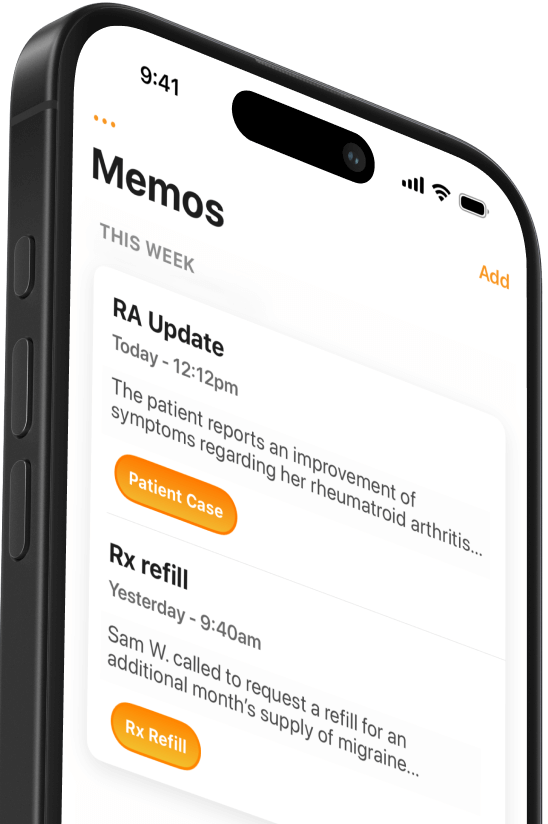Using Smartphone Apps in the Clinic: A Guide for Physicians
Apps can improve care if used wisely. Prioritize HIPAA compliance, reliability, and integration—and discuss tech openly with patients.


Popular articles
Using smartphone apps in the clinical can enhance patient care and streamline your workflows. However, smartphones are still a relatively new tool in medical settings, and many physicians have understandable concerns about patient privacy and confidentiality. This article provides tips for integrating smartphone apps into clinical work thoughtfully and seamlessly. We’ll discuss selecting the right apps, safeguarding patient privacy, ensuring regulatory compliance, and effectively communicating with patients.
Use the Right Apps
Making your smartphone a valuable clinical tool starts with choosing the right medical apps. Focus on three key criteria:
- HIPAA Compliance and Security – As a healthcare provider, you are a covered entity under HIPAA, meaning you are responsible for ensuring that any app handling patient information meets compliance standards. Verify that the app developer employs strong encryption, secure data storage, and access controls. Furthermore, take precautions to protect patient data. Use strong passwords, enable multi-factor authentication, and aavoidstoring sensitive information directly on your device.
- Tested and Well-Reviewed Content – Apps you use at work must provide reliable, clinically accurate information. Talk to peers, check user reviews, and ensure the developer has a strong reputation in the medical community. Apps backed by established healthcare organizations or widely used in your specialty are more likely to be trustworthy.
- Seamless Integration – Choose apps that work smoothly with your EHR and across different devices. The best apps allow you to transition effortlessly between mobile and desktop systems, keeping your workflow efficient and minimizing potential errors. Apps that require manual data input or lack interoperability with your clinical systems can create more problems than they solve.
Communicate with Patients About App Use
Transparent communication with patients regarding how you're using your smartphone in the clinic fosters trust and enhances the patient-provider relationship.
Imagine you are trying out an AI medical scribe that uses your smartphone to transcribe patient encounters and draft clinical notes in your preferred format. Here are some examples of ways you might introduce the tool to patients:
- Keep It Simple. Begin with a straightforward explanation: "Before we start, I typically use an app on my smartphone that transcribes our conversation and captures the important details for your medical record. Are you alright with that?"
- Highlight Benefits. Emphasize how the technology enhances patient care: "This tool helps me capture all the important details from our conversation, allowing me to focus more on you during our visit."
- Respect Patient Preferences. If a patient expresses discomfort, be prepared to adjust your approach. You could take notes manually or dictating notes after the visit.
For more detailed strategies for discussing smartphone apps with patients, see How to Talk About Your AI Scribe with Patients.
Ensure Seamless Integration With Your Workflow
The best medical apps work across platforms and EHRs, allowing physicians to move between mobile and desktop environments without disruptions. Since smartphones are always within reach, it is critical that mobile apps communicate effectively with any desktop computer or system used for clinical work.
While you need apps that communicate easily with other software, apps that only work in your EHR can create inefficiencies rather than solve them. Before fully adopting an app, test it in real-world clinical scenarios to ensure it enhances, rather than hinders, your workflow.
Making Smartphone Apps Work in the Clinic
Smartphone apps can enhance efficiency and patient care—but only when used thoughtfully. Always choose secure, well-integrated tools, follow regulations, and communicate openly with patients. The key is to use apps that fit seamlessly into your workflow, support better clinical decision-making, and respect patient privacy—all in just a few taps.
This article is informational and does not constitute legal advice. Physicians should consult a qualified attorney or compliance expert for guidance on regulatory and legal matters related to mobile app usage in clinical practice.
Related Articles


We Get Doctors Home on Time.
Contact us
We proudly offer enterprise-ready solutions for large clinical practices and hospitals.
Whether you’re looking for a universal dictation platform or want to improve the documentation efficiency of your workforce, we’re here to help.





